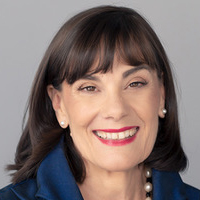
Cindy and Jim were one of those rare couples who had what could be considered a “friendly divorce.” They had been married for 35 years and when it came time to negotiate the asset settlement, a 50-50 division seemed fair to Jim. But he was still working at his high-powered corporate job and Cindy, who spent most of their marriage as the family’s caregiver, hadn’t worked outside the home for 30 years.
In addition to raising their three children, the former PTA president and soccer mom extraordinaire took take care of her dad and Jim’s parents when they were in their failing years. After 12 years in this elder-caregiver role, she was looking forward to re-inventing herself and her life.
Cindy believed her divorce lawyers did a good job for her. She ended up with a nice nest egg that could enable her to retain a comfortable lifestyle. But her only income was her meager Social Security, so she would have to carefully budget to make sure her savings lasted a lifetime. All went well … for 10 years.
A Broken Hip Exposed a Huge Oversight
Then Cindy’s 95-year-old mother moved in with her. Mom had broken her hip, had other health issues and could no longer live alone. Cindy had a brother but he lived on the opposite side of the country. There was no money to put Cindy’s mother into care or even pay for in-home care of any significance.
In short order, Cindy’s savings were depleted. Her mother’s care was overwhelming. And then Cindy got sick. The stress of caregiving and financial contributions to her mother’s care landed Cindy in the hospital.
“Never once in all the negotiations around division of assets did anyone suggest Cindy would need to pay for her long-term care, or have additional funds available if she were called to care for her mother.”
Never once in all the negotiations around division of assets did anyone suggest Cindy would need to pay for her long-term care, or have additional funds available if she were called to care for her mother.
No Care for the Caregiver
Jim had gladly accepted Cindy’s devotion to his parents to help them through their own elder years and illnesses, but Cindy received no compensation for those hours of care. Nothing was added to her Social Security, her IRA or any other form of savings.
Neither Cindy nor her advisors considered that she should look into a long-term-care policy for herself, should she become sick and need care. In fact, no one ever discussed during the divorce settlement who would take care of Cindy if she became sick or how she would pay for her care.
These issues seem obvious when one is in the throes of a medical crisis, but rarely obvious at the divorce table. This is an opportunity for advisors to take the lead, change course, and open the conversation, especially in the “gray divorce” world — the largest growing divorce demographic.
Why Gray Divorce Is Different
Advisors who are brought into divorce are typically met with questions about child support, alimony, college costs for growing children, real estate assets and future pension accounts.
“Gray Divorce” as noted by Carol R. Hughes, Ph.D., LMFT, and Bruce R. Fredenburg, M.S., LMFT is defined as divorce among couples over 50 years old. The rate of divorce for this demographic has doubled since 1990, more than doubled for those over 65 and may triple over the next ten years. The financial focus of these divorcing couples is quite different from those couples with young children or a robust work life ahead of them.
There are a myriad of reasons for any divorce, but the financial implications in a gray divorce are unfortunately consistent. When divorce comes during the retirement years, where the ability to grow income and savings is waning, it compounds the possibility that women will risk financial ruin if they are not prepared for caregiving: either as caregivers, or as the one being cared for.
According to a study undertaken by the National Institutes of Health, gray divorce leads to financial decline for both men and women, but women bear the brunt of this financial decision. More specifically, women experience a 45% decline in their standard of living (measured by an income-to-needs ratio), compared with just a 21% decline for men. Women’s decline in standard of living only reversed following re-partnering, which essentially offset their losses associated with gray divorce, the study found.
A “Caregiving Crisis”
If you are an advisor to clients in the midst of both retirement and divorce, you need to know that the likelihood of them having a caregiving event is practically guaranteed.
The CDC recently noted that the need for caregivers is expected to continue to grow along with the aging U.S. older adult population. Currently, there are seven potential family caregivers per older adult. By 2030, it is estimated there will be only four potential family caregivers per older adult. In addition:
- 17.2% of middle–aged and older adults who are not currently caregivers expect to provide care or assistance in the next two years to a friend or family members with a health problem or a disability.
- 20.0% of adults aged 45-64 years who do not currently provide care to someone expect to do so in the future, compared with 12.8% of adults aged 65 years and older.
In 2021, AARP Caregiving studied the out-of-pocket cost of unpaid family caregivers and concluded that the average amount spent would be in excess or $7,000 per year. If your client will be on a budget and has a mother, father, daughter, son or brother-in-law (like I did) to care for, one needs to calculate an additional $600 per month for these out-of-pocket caregiving expenses.
Family caregivers provide an average of 23.7 hours of care each week. This number goes up substantially for those whose care recipients live with them (37.4 hours per week), making caregiving the equivalent to a full-time job.
The statistics are just as grim if and when your client will need care. Nearly half (46%) of care recipients are age 75 and older (The average age is 68.9 years old)
Additional Reading: Becoming Destitute with a $2 Million Retirement Account
Why Gray Divorce Can’t Forget Long-Term Care
Understanding that a divorce changes a person’s financial status, usually for the worse, especially for older women, requires an advisor to then understand what the future of their client will likely entail. It is no longer about child care, college costs or housing. It is about maintaining an economic lifestyle that has already been achieved in the face of a caregiving event and not placing others under an additional financial burden.
“Understanding that a divorce changes a person’s financial status, usually for the worse, especially for older women, requires an advisor to then understand what the future of their client will likely entail.”
Critical Conversations
So, what is an advisor to do?
- Recognize that a long-term care conversation has to be an integral part of the divorce conversation.
- Make certain you understand what kind of care your client thinks they want or can have if they need long-term care.
- Help clients develop a plan to pay for long-term care.
- Ensure that clients who anticipate being caregivers understand that they will likely bear some of the economic costs.
Advisors must continue to address the long-term care crisis in this country regardless of divorce. This is an economic question for both caregivers and care recipients — and your clients are or can be both. It is imperative to extend this conversation to the divorce arena, especially to clients who will experience a gray divorce. You will be the advisor who is a cut above the rest if you bring this to the table.
Cathy Sikorski, Esq., is an elder attorney, speaker and author who unravels the complex financial and legal problems of caregiving and aging. She has been a caregiver for eight people. Cathy uses her experience to educate, entertain and elevate the conversation around money, retirement, aging and caregiving. Her third book, “12 Conversations: How to Talk to Almost Anyone about Long-Term Care Planning,” was released in October 2021 by Corner Office Books and is available on Amazon.







